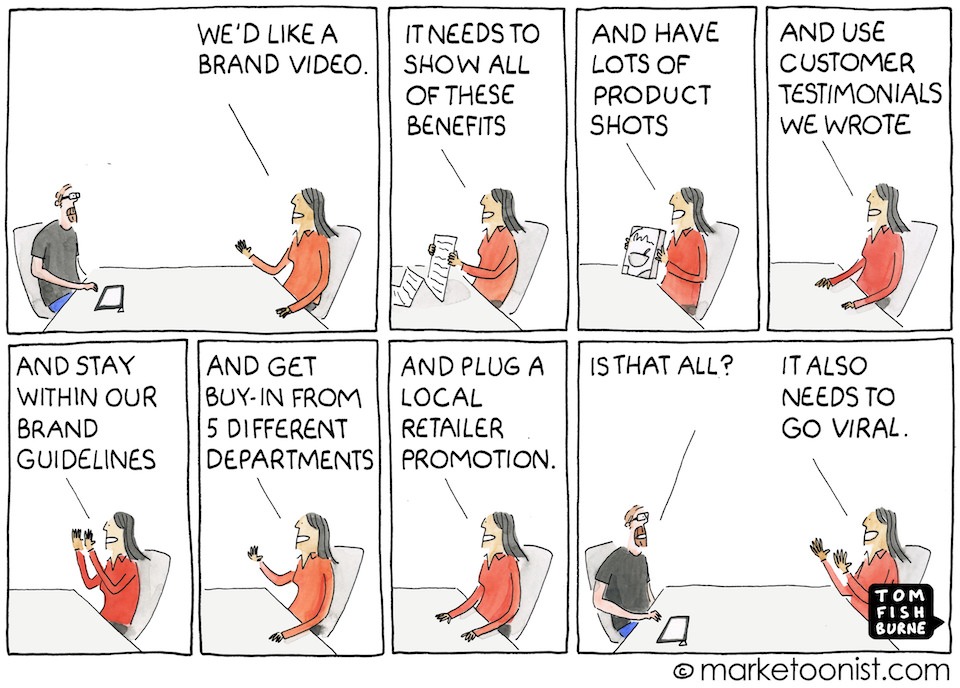A creative brief is a vital part of any successful project. Most of the time, the advice you get makes it way harder the necessary.
In this article, you will:
- Learn exactly how to make a brief for a video.
- Learn how to keep it simple.
- Learn how to repeat this process.
First, cut every bit of fat.
A video – any video – should have one goal. One. There can be supporting objectives, but the grade of a video is based on if it achieves its one goal.
Video should make someone understand or feel something, and after watching, interested people should do something.
On our end, each video gets a one sentence brief, and a five sentence supporting brief.
Step One: Figure Out Your Ultimate Goal (One Sentence Master Brief)
Here’s what happens mostly:

Instead of this, make one goal per video and make damn sure it does that.
Here are some examples:
- After watching this video, our audience will understand EXACTLY our service does, and interested people will schedule a demo.
- After seeing this video, people will understand that I’m a great choice for speaking and book me for a gig.
- After seeing this video people will understand that our brand is built for engineers, and engineers will ask to do more.
This will keep the whole team focused. It takes discipline to make a video that does one thing, but the discipline is exactly why the projects work or they don’t.
Note, you can be even more specific with this: this video will increase conversions from 1.8% to 2.6%, or have clicks to the website go to 100 on social media.
Step 2: Add Supporting Information About Your Project
The next thing we do is what we call Target. It’s an easy acronym that creates
It’s less important than the brief, but it guides us:
Treatment: How will this look (broad strokes, these are decisions that come a little later). What referencews will we be using?
Audience: Exactly who are the viewers. (Engineers that are using X product).
Requirements: What has to be in the project? Sometimes we do have sponsor information, and sometimes we have to announce something critical.
Goal: What, exactly will a successful outcome of this creation be?
Emotional or Educational: Is this designed to create an emotion or educate?
Time: How long is this, when exactly is it due, and what are the other milestones?
When we put everything in place we’ll have something that is way easier than the normal creative brief process. It will be more accurate than most of the briefs are and create a great starting point.
Step 3: Get everyone on board
So we’ve done the first part – make one sentence master goal.
The second part supports and restates our goal.
The third part is to get everyone on board. This is something that will keep the video from losing focus. People all want to do everything, and the ideas are often compelling, but what’s important is to make sure that whatever video we make serves its intended purpose.
The key to video success is one video, one job. Get clear on that and your videos will turn out great.
